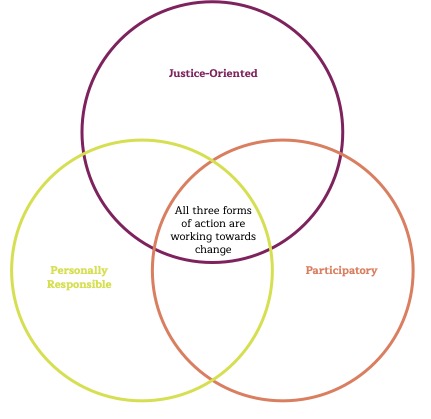
Organic and Action
Place of Learning:
Summary:
In this lesson, students learn about three different forms of action that can be taken to make positive change. They then study individuals and organizations employing each of these kinds of action on issues related to "organic."
Student Learning Goals & Objectives:
- Explore the similarities and differences between different types of actions that can be taken to affect change.
-
Reflect on the types of actions that they feel most drawn to engaging in.
Download Lesson Materials
Teaching Notes:
- This lesson emphasizes open discussion. For tips, suggestions, and resources on leading open discussions please see our resources: Facilitating Open Discussions and Mindsets for Open Discussions.
- The “READ” and “DISCUSS” sections of this lesson plan can be used as talking points or as a script to introduce activities.
- If teaching this in the garden, you can make a whole-class chart in place of worksheets for your students to fill out collectively.
- If teaching asynchronously or assigning the lesson plan as homework, for the sections that instruct students to READ, consider recording yourself reading the sections aloud and sending the recording to students. This adaptation offers a helpful strategy for differentiating learning that supports all students, especially English Language Learners.
- This lesson asks students to look through case studies of profiles of individuals or groups that are taking action around issues related to organic. These profiles are adapted from online resources to accommodate garden-based instruction. If your class has access to computers, we recommend that students conduct online research of each individual or group. We also encourage you to create profiles of individuals or groups doing work in your area.
- This lesson is part of Edible Schoolyard Project’s Understanding Organic curriculum and is the eighth lesson in the “core lessons” of the curriculum.




